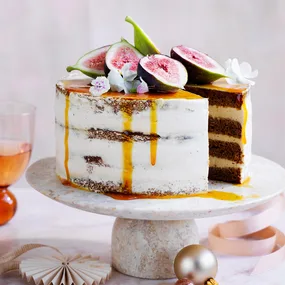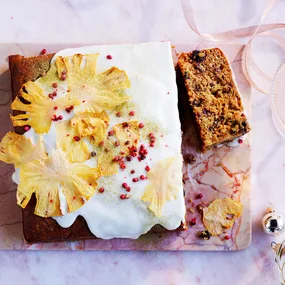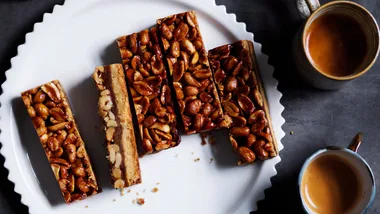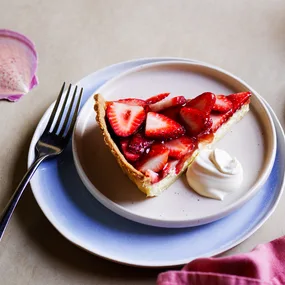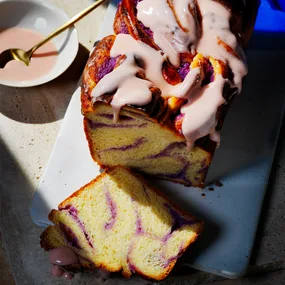Trifles have been making spirits bright for 400 years. According to The Oxford Companion to Food, the first recipe with trifle in the title appeared in 1596, but recipes for trifle as we know it today were first seen in the mid-18th century. Before this, they were more along the lines of a fool.
My trifle, like most, has three parts: a sponge base, in this case almond, syllabub in place of custard, and fruit in the form of fresh berry jam. I love the colours of the berries, and the syllabub keeps it nice and light. After a big Christmas lunch, that’s much appreciated.
Part 1: The syllabub
Syllabub, a foamy concoction of cream and wine, appeared about the same time as the first trifles and has featured in trifle recipes since. It’s one of various creamy toppings used to lubricate trifles, along with custard, cream or crème fraîche, and it’s both easy and rewarding to make.
I make mine with a couple of wines: a dry white wine (the tropical flavours of sauvignon blanc work well) and a blended sherry such as Bodegas Hidalgo Cream Alameda to chime with the sherry the sponge is soused with. (Just avoid the extremes of bone-dry fino or manzanilla and syrupy Pedro Ximénez.) The wines are combined and infused with a squeeze of lemon and a piece of lemon peel; together the acid and wine set the syllabub a little, creating a silky texture.
The wine infusion can be prepared up to a week ahead to allow time for the flavours to meld and the lemon peel to release its oils. When you’re ready to go, strain out the peel and add the sugar. When you then whisk in the cream, both the cream and wine should be chilled; if it’s a hot day, whisk the mix over a bowl of ice. You want the mixture to form soft peaks that hold when the whisk is lifted.
Part 2: The base
For the trifle base, sponge, macaroons, Génoise and sponge fingers all work well. I like an almond sponge as a play on the almond flavour often found in older recipes, and enhance this with crumbled amaretti biscuits on top of the berry jam. Almonds also add a little welcome density to the sponge, making a sturdy base for the toppings.
When you make the sponge batter, the eggs, sugar and glucose need to be whisked in a bowl over simmering water until the mixture reaches 45C to dissolve the sugar well, creating a stable foam and, in turn, a more stable cake. If you don’t have a thermometer, heat the mixture until it feels just warm to the touch. Remove it from the heat and whisk the mixture until it holds a ribbon – an electric mixer helps here – then fold in the flour in three separate additions so it combines well, but don’t overmix it or you’ll knock the air out.
I use a 20cm by 30cm Swiss roll tin. Pour the batter in gently so you don’t lose the air that’s needed to help it rise, and spread the batter evenly to the sides – tilt the tin or use the edge of a spatula – then bake the sponge until it’s golden and springs back when lightly pressed.
This recipe makes double the amount of sponge you need for the trifle, so freeze the other half for another use; it will keep in the freezer for two to three months wrapped well in baking paper and plastic wrap. I bake the sponge the day before I’m serving the trifle and refrigerate it overnight, uncovered, to dry it out a little and firm it up so it’ll soak up the sherry without going soggy.

Step 3
(Photo: Ben Hansen)
Step 4
(Photo: Ben Hansen)Part 3: The jam
For the fruit layer, at this time of year I like to use berries for a tangy jam. It’s perfectly fine to use frozen as well as fresh, or a mix of both, as long as the weight is the same. Don’t let them turn to mush; you want to retain the integrity of the fruit. I cook half the berries and add the remaining fresh berries later for contrasting textures. A little lime enhances the flavour and keeps the berries vibrant, and I use pectin (available at kitchenware shops such as The Essential Ingredient) to thicken the juice – berries are low in pectin and need a little help. Mix the pectin with the sugar first to disperse it and prevent lumps forming in the jam. Otherwise use a jam-setting sugar instead.
To be really organised, prepare the sponge, jam and wine mixture a day or two ahead, then all you need to do on the day is finish the syllabub, assemble the trifle, and refrigerate it. Ideally, serve it within a few hours, but it will hold well in the fridge overnight.

Step 6
(Photo: Ben Hansen)
Step 9
(Photo: Ben Hansen)The finishing touch
To serve the trifle, I scatter extra berries on top; redcurrants and cherries are also ideal and could be used in the jam, too. The green of grated pistachio would add an extra Christmassy flourish against the red and white. A glass or crystal stemmed bowl makes this an extra-special centrepiece for a festive table.

Step 10
(Photo: Ben Hansen)
